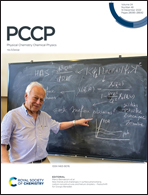Influence of the chemical structure of diisocyanate on the electrical and thermal properties of in situ polymerized polyurethane–graphene composite films†
Abstract
If the conductivity and thermal properties of polyurethane films are improved with fillers, they can be used in wearable electronics, strain sensors, etc. In this regard, the present study aims to examine the effects of various diisocyanates as hard segments on polyurethane–graphene (PU/G) nanocomposites. To achieve this, nanocomposites are synthesized, first, and then the structural, electrical, and thermal properties of them are investigated. The results indicate that only PU/G composites based on toluene diisocyanate (TDI), methylene dicyclohexyl diisocyanate (HMDI), and hexamethylene diisocyanate (HDI) have non-zero I–V curves and are in the percolation zone. The thermal stability of the PU/G composite based on cyclo-aliphatic isophorone diisocyanate (IPDI) is higher than that of the others, while TDI–PU/G has the lowest thermal stability due to its chemical structure. The results show that HDI–PU/G, based on less dangerous diisocyanate, is a more flexible nanocomposite. It also has electrical advantages, a wider range of working temperatures, and good thermal stability. Furthermore, the maximal Seebeck coefficient and voltage belong to it, which are around 2.5 mV °C−1 at 45 °C and 0.15 V at 85 °C, respectively.



 Please wait while we load your content...
Please wait while we load your content...